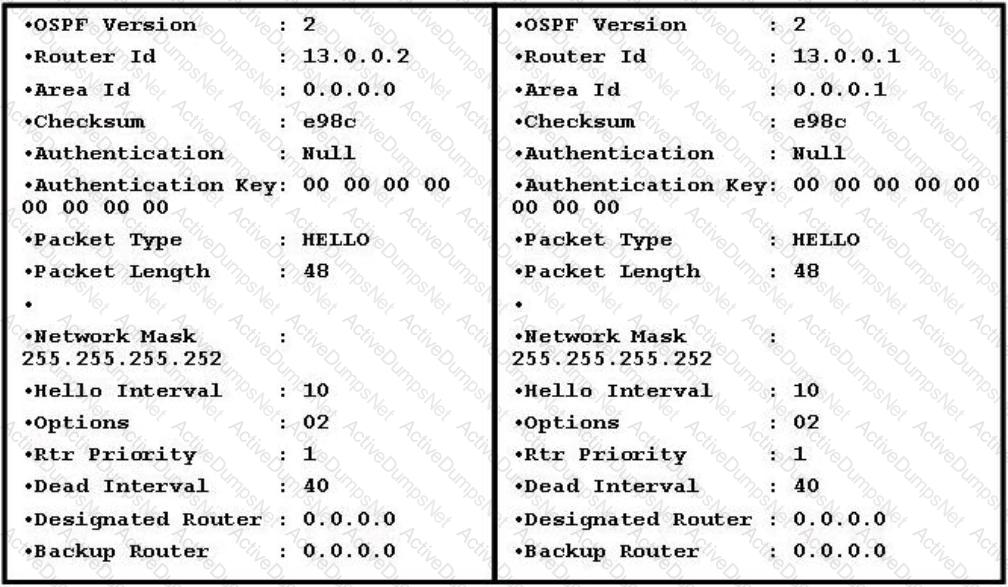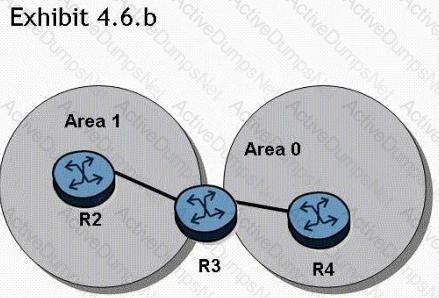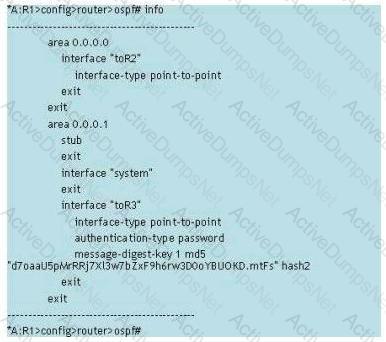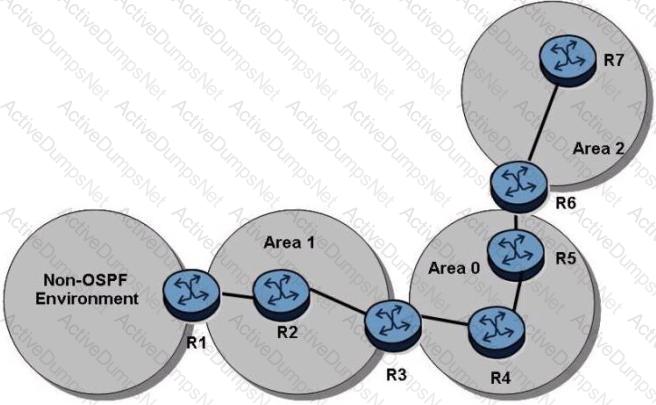Nokia 4A0-113 Nokia OSPF Routing Protocol Exam Exam Practice Test
Nokia OSPF Routing Protocol Exam Questions and Answers
Which of the following are similarities between OSPF and IS-IS? Choose two answers.
When redistributing OSPF into RIP V2 what must be taken into consideration for the redistribution to take place?
Which of the following statements regarding OSPF routing updates on a point-to-point link is true?
Which of the following conditions will prevent an OSPF adjacency from reaching the full state? Choose three answers.
Which of the following statements best describes an OSPF type 3 LSA?
In an IP datagram, which field identifies the receiving application?
In an IP datagram, which of the following fields identifies the receiving application?
Select the answer below that correctly lists the 5 different OSPF packet types.
Click the exhibit button.

Two neighboring OSPF routers have exchanged the packets shown. What state is the adjacency in?
Click on the exhibit.

The route table on router R2 shows the system address of router R5 but it does not show any of the interfaces from the non-OSPF area.
What may be causing this?
Which type of OSPF LSA has the following characteristics: It is flooded only within the area it originates from and can be originated by any OSPF router within the area (including non-DR routers).
What address is used when RIPv2 uses multicast to send its updates?
What are the default Hello and Dead timer intervals for OSPF on the Nokia 7750 SR?
What is the source IP address in an OSPF update?
If OSPF is used in a multi-area OSPF network, which of the following statements regarding route summarization is true?
Which of the following statements best describes the function of an OSPF Type 4 LSA?
In an OSPF Hello packet what fields must match all neighbor routers on the segment? (Choose 3)
Click the exhibit button.

Which of the following would correctly configure routers R2, R3, and R4?




Which of the following OSPFv3 LSAs have an AS scope?
What is the protocol number for OSPF in the IP header?
Refer to the exhibit.
Assume that OSPFv3 is properly configured on all routers and that R4 advertises its system prefix into Area 0. Which of the following statements best describes how R5 learns R4's IPv6 system prefix?
How many databases does a Link State routing protocol use?
Which of the following statements regarding OSPF routing updates on a multi-access network segment is true?
An interface is configured on a router for OSPF but the command "show router ospf neighbor" does not show any neighbors. Which of the following is NOT a possible cause?
The Nokia 7750 SR supports which two of the OSPF area types below?
Click the exhibit button.


The OSPF adjacency between routers R3 and R1 is down. What is the problem?
What modes of authentication are supported for RIPv2 on the Nokia 7750 SR?
An OSPF router receives an update in which the sequence number, age, and checksum are the same as the entry already in the topological database. What action is taken by the router?
A static route is created using the command "static-route 0.0.0.0/0 next-hop 3.3.3.1". What command could be used to test the static route on a Nokia 7750 SR?
Which of the following statements concerning OSPFv3 is false?
Click on the exhibit.

